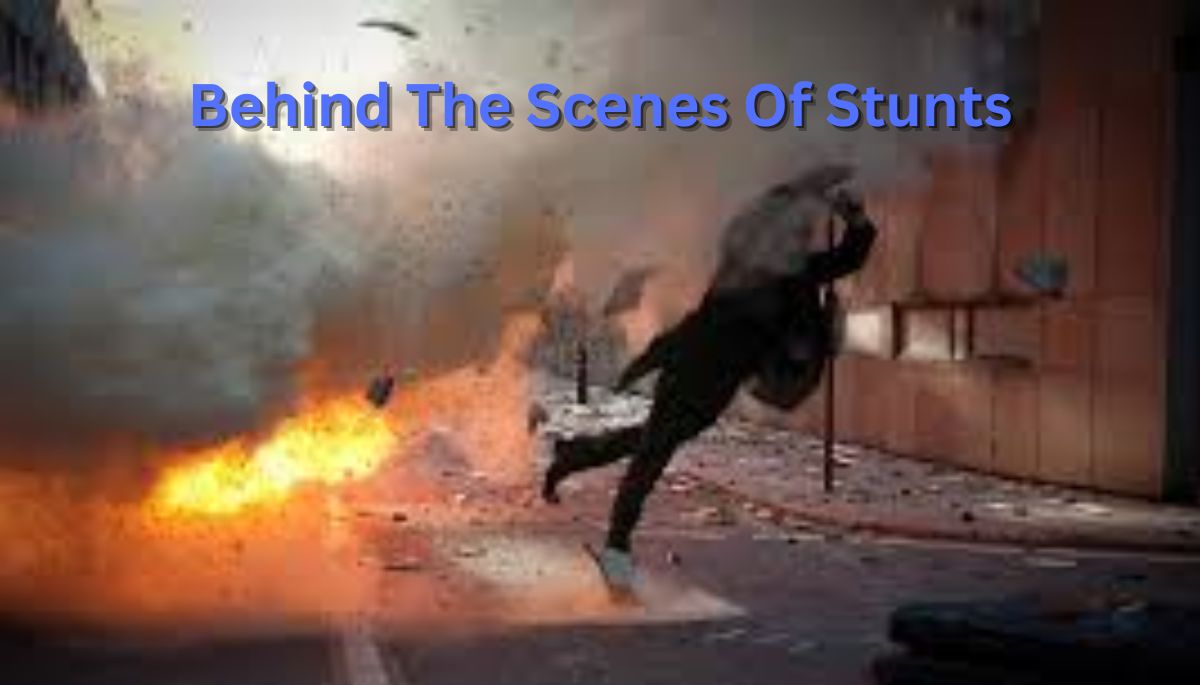From jaw-dropping car chases to death-defying leaps, action stunts have long been the heart-pounding centerpiece of blockbuster films.
But how are these adrenaline-fueled sequences brought to life? Dive into the captivating world of movie stunts, where meticulous planning, safety protocols, and the dedication of skilled professionals combine to create cinematic magic.
The Blueprint: Pre-production Planning
Extensive pre-production work lays the foundation for thrilling action sequences before a single punch is thrown or a car is flipped.
Directors collaborate closely with stunt coordinators, utilizing storyboards and animatics to visualize stunts in their early stages.
This process ensures a cohesive vision aligning with the film’s narrative and tone.
“Pre-production is where the magic begins,” says veteran stunt coordinator Mike Gunther.
“We break down the script, identify key action beats, and start brainstorming how to bring them to life safely and spectacularly.”
Safety First: The Stunt Coordinator’s Domain
At the heart of every successful action sequence is the stunt coordinator, a highly skilled professional responsible for designing and overseeing the execution of stunts.
Their expertise extends beyond choreography to encompass rigorous safety protocols and risk management.
Key responsibilities of a stunt coordinator include conducting thorough risk assessments for each stunt, selecting and training appropriate stunt performers, ensuring proper safety equipment usage, and collaborating with directors to achieve the desired visual impact while prioritizing safety.
Stunt coordinators often undergo years of specialized training in various disciplines, including martial arts, gymnastics, and rigging techniques.
Bringing Stunts to Life: On-Set Execution
When cameras roll, the carefully orchestrated plans are put into action. Stunt performers, often unsung heroes of the film industry, showcase their athleticism and precision to create heart-stopping moments.
“There’s an art to making stunts look effortless and dangerous on screen while maintaining absolute control behind the scenes,” explains veteran stunt performer Sarah Molasky.
“It’s a delicate balance of skill, timing, and trust in your team.”
Key elements of on-set stunt execution include multiple camera angles to capture the action dynamically, specialized safety equipment, including harnesses and crash pads, clear communication between the stunt team, director, and crew, and meticulous rehearsals to perfect timing and coordination.
The Human Element: Dedicated Stunt Performers
Behind every death-defying leap or bone-crushing fight scene are highly trained stunt performers who risk their bodies to create cinematic thrills.
These professionals undergo rigorous physical conditioning and skill development to execute complex stunts safely.
Stunt performers focus on cardiovascular endurance, strength training, flexibility and agility work, and specialized skills like martial arts, parkour, and precision driving.
“The dedication of stunt performers is unparalleled,” notes casting director Lana Johnson. “They’re athletes, artists, and daredevils rolled into one, constantly pushing the boundaries of what’s possible on screen.”
Enhancing the Action: Post-Production Magic
While practical stunts form the foundation of action sequences, post-production enhancements take them to the next level.
Visual effects artists and sound designers work their magic to amplify the impact and realism of on-screen action.
Post-production techniques include CGI integration to enhance or extend practical stunts, sound design to create impactful audio cues, editing to optimize pacing and tension, and color grading to enhance the visual mood.
Advances in motion capture technology allow stunt performers’ movements to be seamlessly integrated with CGI characters, expanding the possibilities for action sequences.
Mitigating Risks in High-Stakes Filmmaking
While action stunts are designed to thrill audiences, the safety of performers and crew is always the top priority.
Rigorous safety protocols and industry regulations govern the execution of stunts in film and television production.
Essential safety measures include comprehensive insurance coverage for stunt-related activities, on-set medical personnel and emergency response plans, strict adherence to industry safety guidelines, and regular equipment inspections and maintenance.
“Safety isn’t just a buzzword in stunt work – it’s the foundation of everything we do,” emphasizes safety coordinator Rachel Tanner.
“Every precaution is taken to minimize risks and ensure performers can push their limits without compromising their well-being.”
The Future of Action: Pushing Boundaries Responsibly
As technology evolves and audience expectations grow, the world of movie stunts continues to push boundaries.
Virtual production techniques, advanced motion capture, and innovations in safety equipment are opening new possibilities for action filmmaking.
However, industry experts emphasize that practical stunts will always have a place in cinema.
“There’s an authenticity and energy to real stunts that audiences can feel,” says director Alex Chen.
“The key is finding the right balance between practical effects and digital enhancements to create truly unforgettable action sequences.”




